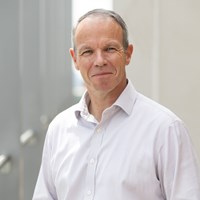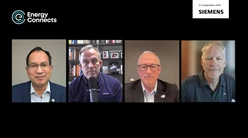Harnessing feedstock diversity for sustainable aviation fuel production
Relying on a single feedstock for Sustainable Aviation Fuel (SAF) production is not a realistic option. The amount of SAF needed for the aviation sector to meet the growing number of mandates and targets globally will require contributions from all feedstocks and multiple process routes. To date, the focus has been on hydroprocessed esters and fatty acids (HEFA) derived from used cooking oil. However, the availability of this feedstock is limited, with around 80% of that used in the EU being imported.
Although regions such as the US, Europe, and the UK have led the way with mandates and incentives for SAF production, attracting feedstocks from around the world, this reliance on imports poses a significant threat to meeting SAF targets, especially as other regions inevitably set their own goals. Relying too heavily on HEFA and imported feedstocks is not a long-term solution.
Diversification of feedstocks is vital for resilience
Feedstock diversification is essential for building resilience within the biofuels industry. Relying on a single type of feedstock may leave fuel suppliers vulnerable to market volatility and supply chain disruptions in an emerging market. Fuel suppliers, who are the obligated parties under mandates in the EU and UK, are expected to meet SAF targets in multiple regions, including the USA, Japan and a growing list of others. By incorporating a variety of feedstocks, both fuel suppliers and countries can take greater control of their own supply and ensure access to SAF from domestic feedstocks.
Unlocking SAF at scale through feedstock diversity
The Fischer-Tropsch (FT) process, based on a syngas platform, is an ASTM-approved route for producing synthetic SAF blendstocks. Syngas is a mixture of carbon monoxide (CO) and hydrogen (H2) and the FT process builds the hydrocarbon chains needed for SAF. Syngas can be produced from a huge range of feedstocks, such as municipal solid waste (MSW), waste biomass, and captured carbon dioxide (CO2) emissions (when combined with H2). Companies such as Johnson Matthey (JM) are leading the way in delivering syngas technology and the leveraging the versatility provided by the FT route to enable scalable SAF production.
FT CANS: A step-change in Fischer Tropsch technology
The FT CANS, the technology developed by Johnson Matthey and bp, marks a significant advancement in FT technology. The combination of reactor design and innovative catalyst offers several technical benefits that enhance the efficiency and scalability of the FT process:
The FT CANS technology utilises a modular reactor design that reduces the amount of catalyst required, lowering capital costs by approximately 50% compared with traditional fixed-bed FT systems. The modularity also allows for easy scalability, enabling plant sizes to match available feedstock quantities. Our largest announced project to date is expected to deliver a capacity of 13,000 barrels per day when operational.
Heat management is critical in the highly exothermic FT process. The FT CANS reactor features a unique configuration that improves heat transfer and control. As a result, the system boasts high conversion rates, with CO conversion efficiencies exceeding 90%. This is achieved via an innovative radial flow design that maximises contact between syngas and catalyst, facilitating efficient mass transfer and boosting productivity and selectivity towards desired hydrocarbon products.
Conclusion
Processing eligible feedstocks for SAF production not only reduces greenhouse gas emissions but also yields economic benefits. According to the International Air Transport Association (IATA), the use of SAF can reduce net carbon emissions by over 80% across its life cycle compared with fossil-derived jet fuel.
Adopting a diverse range of feedstocks for fuel production offers a long-term solution for creating synthetic fuels and meeting the increasing SAF targets worldwide.
Overall, harnessing feedstock diversity is a critical enabler for producing synthetic fuels at scale. Syngas-based FT CANS technology can play a key role in realising this ambition. As the industry evolves, collaboration between governments, industry stakeholders, and research institutions will be vital to unlock the full potential of feedstock diversity for SAF.
Energy Connects includes information by a variety of sources, such as contributing experts, external journalists and comments from attendees of our events, which may contain personal opinion of others. All opinions expressed are solely the views of the author(s) and do not necessarily reflect the opinions of Energy Connects, dmg events, its parent company DMGT or any affiliates of the same.






